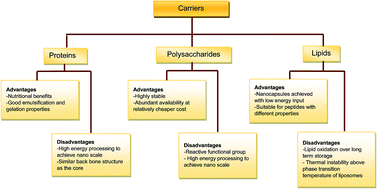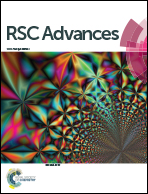Encapsulation of food protein hydrolysates and peptides: a review
Abstract
Food protein hydrolysates and peptides are considered a category of promising functional food ingredients. However, commercial application of protein hydrolysates and their constituent peptides can be impeded by their low bioavailability, bitter taste, hygroscopicity and likelihood of interacting with the food matrix. Encapsulation as a delivery mechanism can be used to overcome these challenges for improving the bioavailability and organoleptic properties of the peptides. Proteins, polysaccharides and lipids are the three carrier systems that have been utilized in food peptide encapsulation. The protein and polysaccharide systems mainly aim at masking the bitter taste and reducing the hygroscopicity of protein hydrolysates, whereas the lipid-based systems are intended for use in enhancing the bioavailability and biostability of encapsulated peptides. A spray drying technique is largely used to achieve microencapsulation in both protein and polysaccharide systems while, generally, liposomes are prepared by a film hydration technique. However, it is seen that the encapsulation efficiency (EE) of peptides using the liposome model is relatively lower since the entropy-driven liposome formation is uncontrolled and spontaneous. Achieving adequate EE through cost effective techniques is indispensable for encapsulation to be applicable to bioactive peptide-based product commercialization. Furthermore, the design of high quality functional foods requires detailed understanding of the release mechanism and kinetics, gastrointestinal stability, bioavailability and physiological bioactivity of the encapsulated peptide products.


 Please wait while we load your content...
Please wait while we load your content...